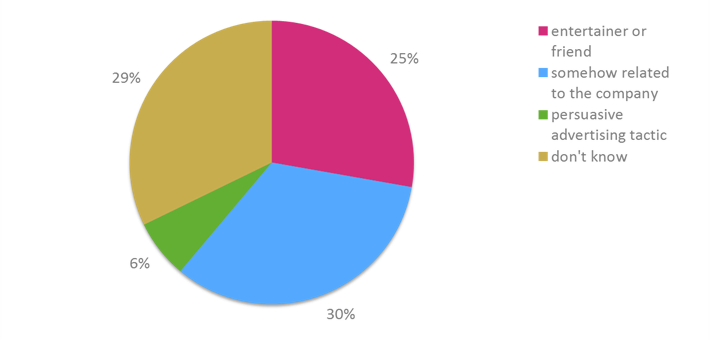
How Kids See Cartoon Characters in Commercials: Friends or Advertisers?
Brand cartoon characters like Ronald McDonald are a familiar face to many people. But they can mean different things to kids than adults , according to a study from an International Communication Association meeting. Younger kids don’t fully understand that these brand characters are advertisements. More often they believe they are an entertainer or friend. It also shows that boys recognize these characters more often than girls.
Take aways
- Boys recognize brand characters better than girls. This suggests that children are more likely to pay attention to characters of the same gender (all the characters in the study were male).
- Most kids don’t see a brand character as an advertisement but as someone who tells them about products, entertains them, or even as their friend.
Study information
The question?
How familiar are children with brand characters and do they understand that these characters are used to promote products?
Who?
206 3- to 8-year olds. Note: children are from low-income families
Where?
Northern America: Northeast (urban; African-American) and Appalachia (rural; White)
How?
Children were shown an image of three brand characters (Chuck E. Cheese from Chuck E. Cheese restaurants, Ronald McDonald from McDonalds restaurants, and Tony the Tiger from Frosted Flakes cereal). The children said who the character was and talked about the character.
Facts and findings
- Children recognize Chuck E. Cheese the most and Tony the Tiger the least.
- Older kids are more likely to recognize the brand characters.
- Boys recognize brand characters better than girls.
- One third of the children connected the brand characters to the company (i.e., restaurant or cereal company) that created the character.
- Only a small percentage of kids realized that brand characters promote a business.
- Older children and children who are more familiar with a brand character are more likely to connect the characters to advertising.
- Funny fact: Around 25% of kids perceive brand characters as entertainers or as their friends.
- Critical note: Because young children can struggle to explain things they understand, they may realize more than the study shows.
- Critical note: It isn’t clear from the study how much kids may want an advertised product compared to what they know about brand characters.